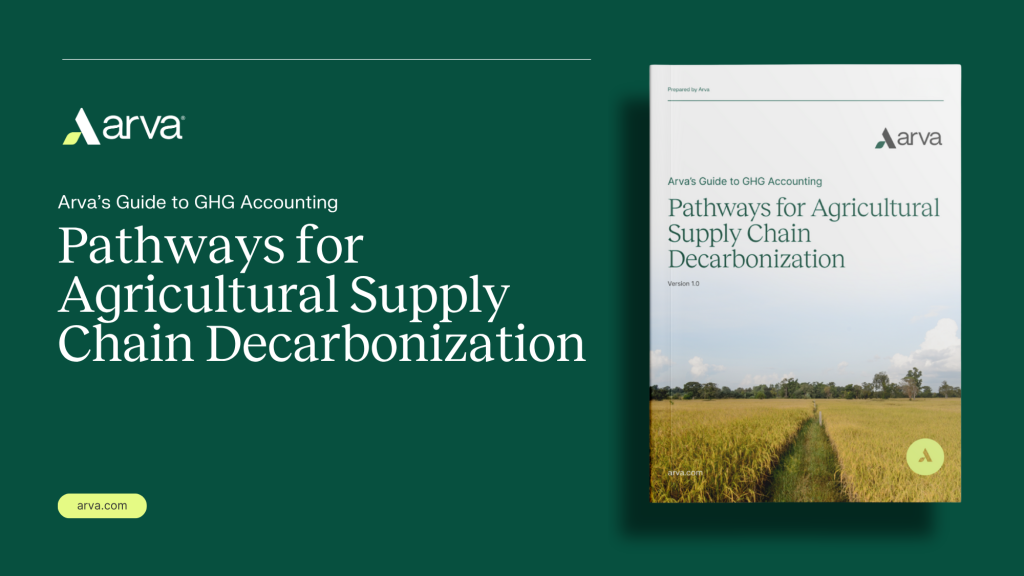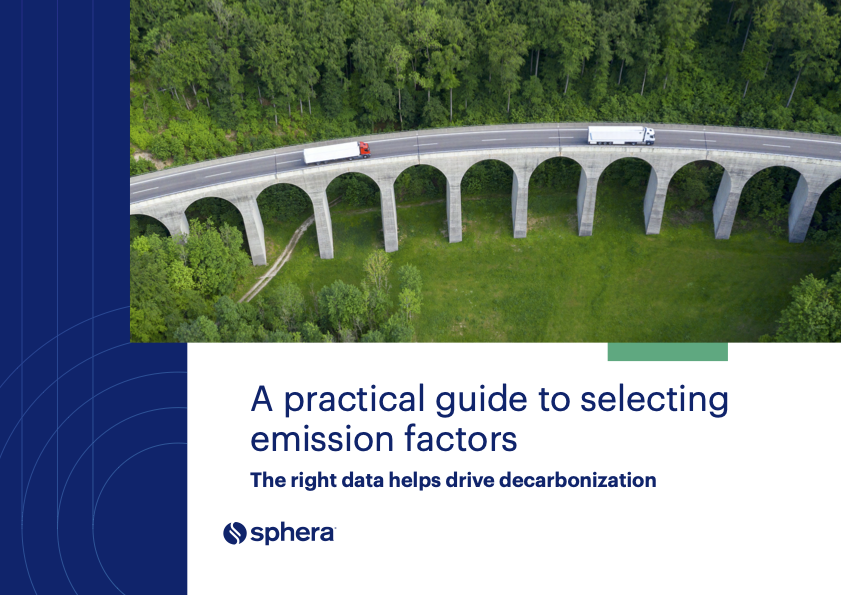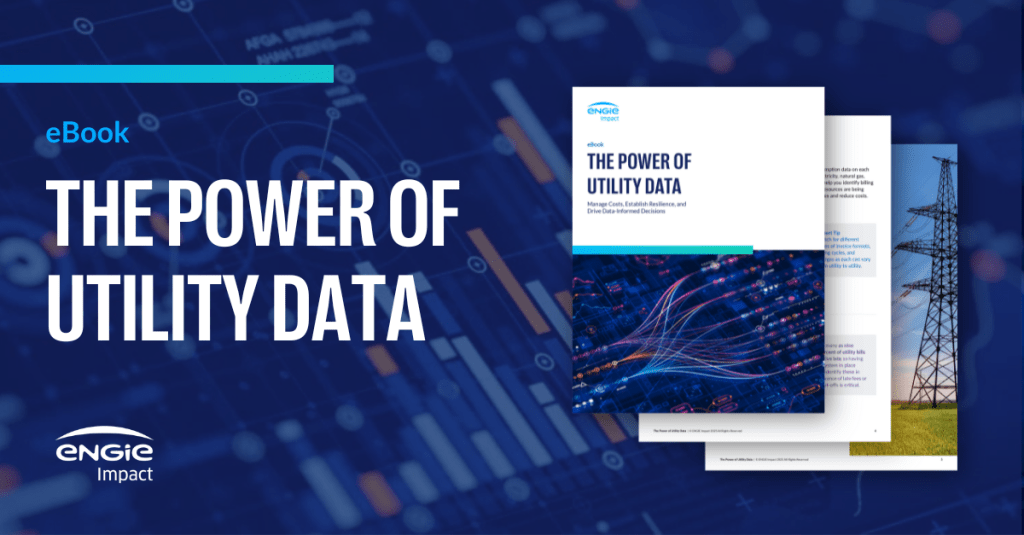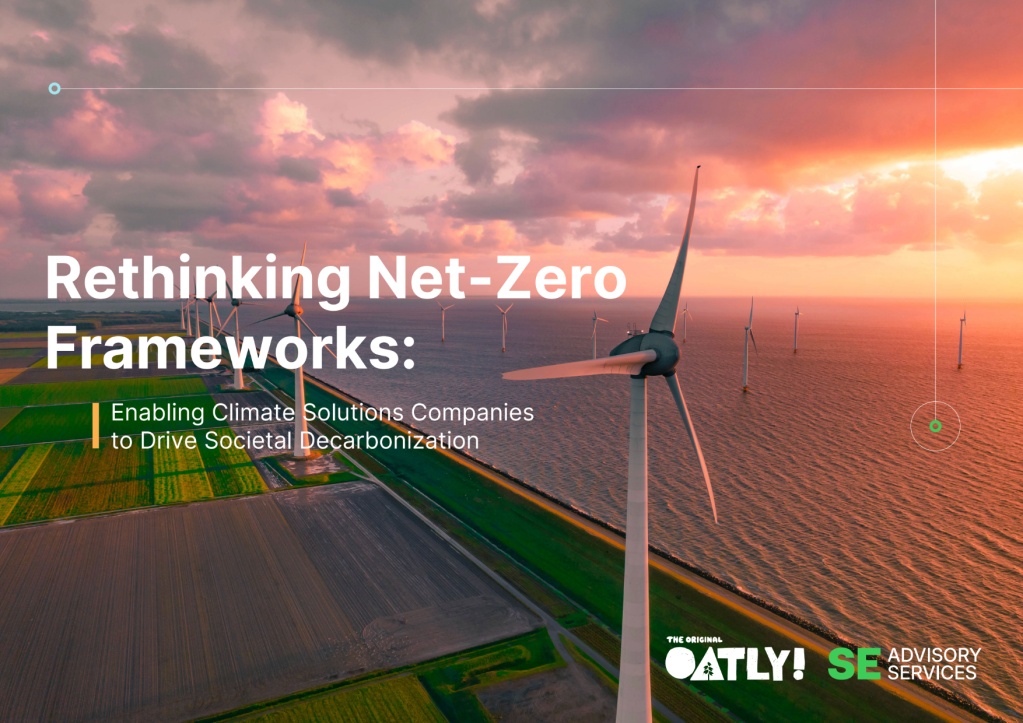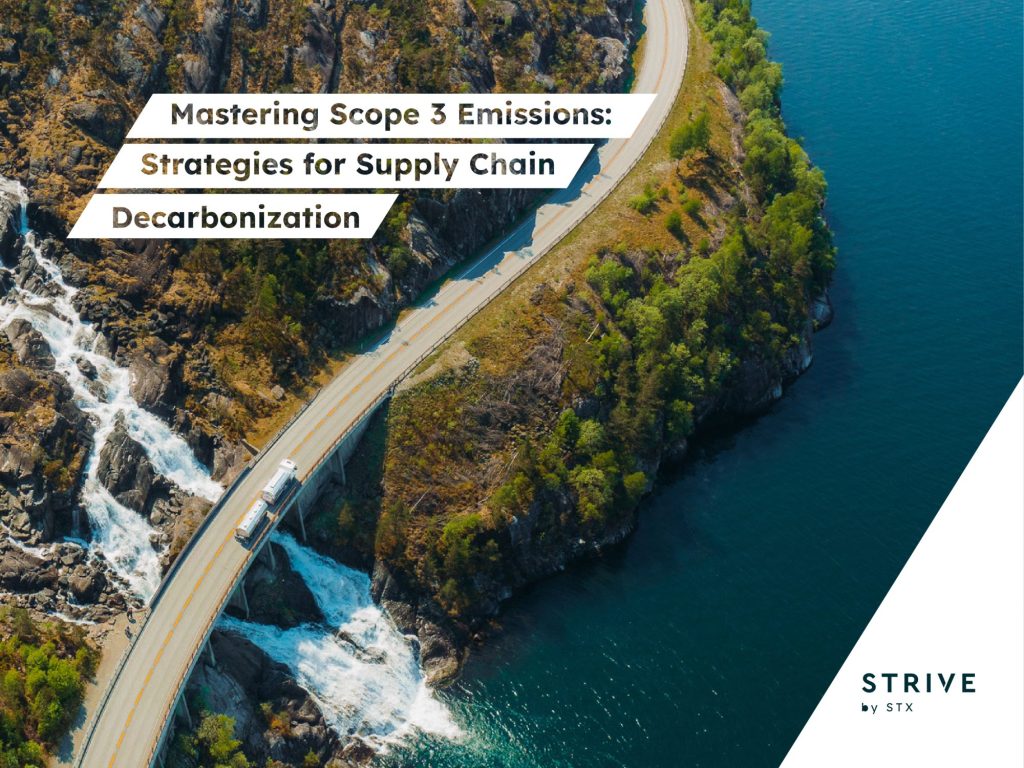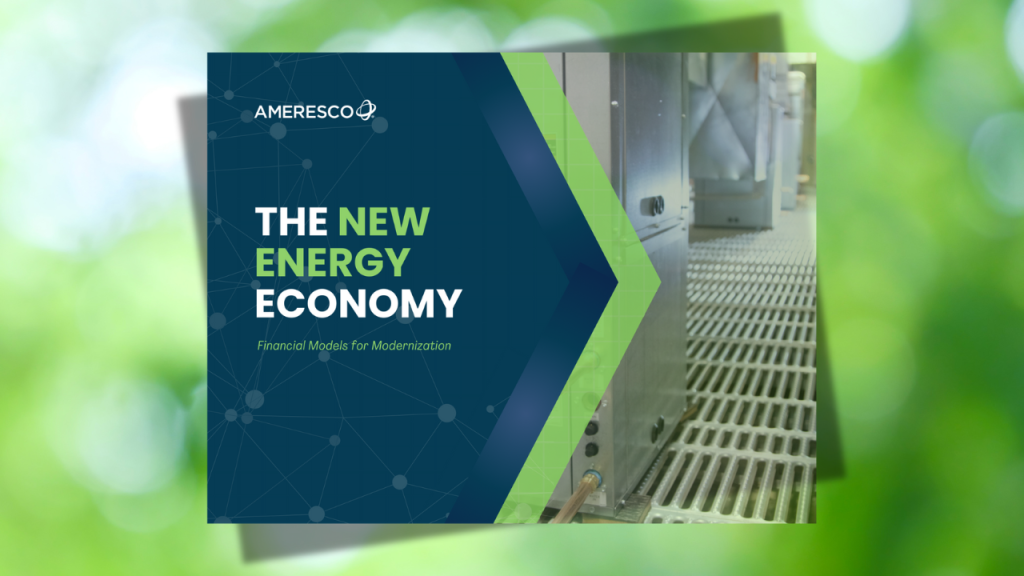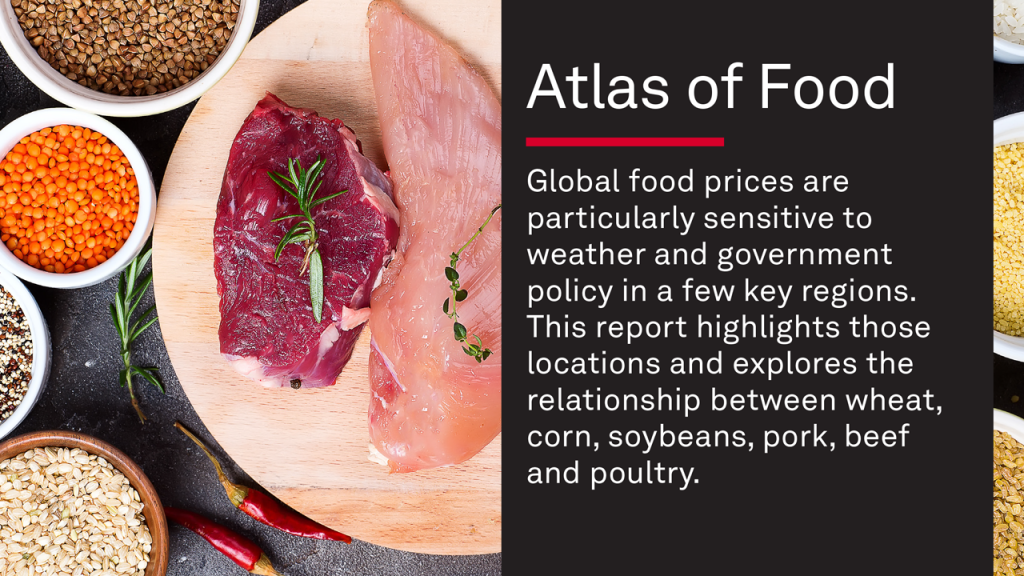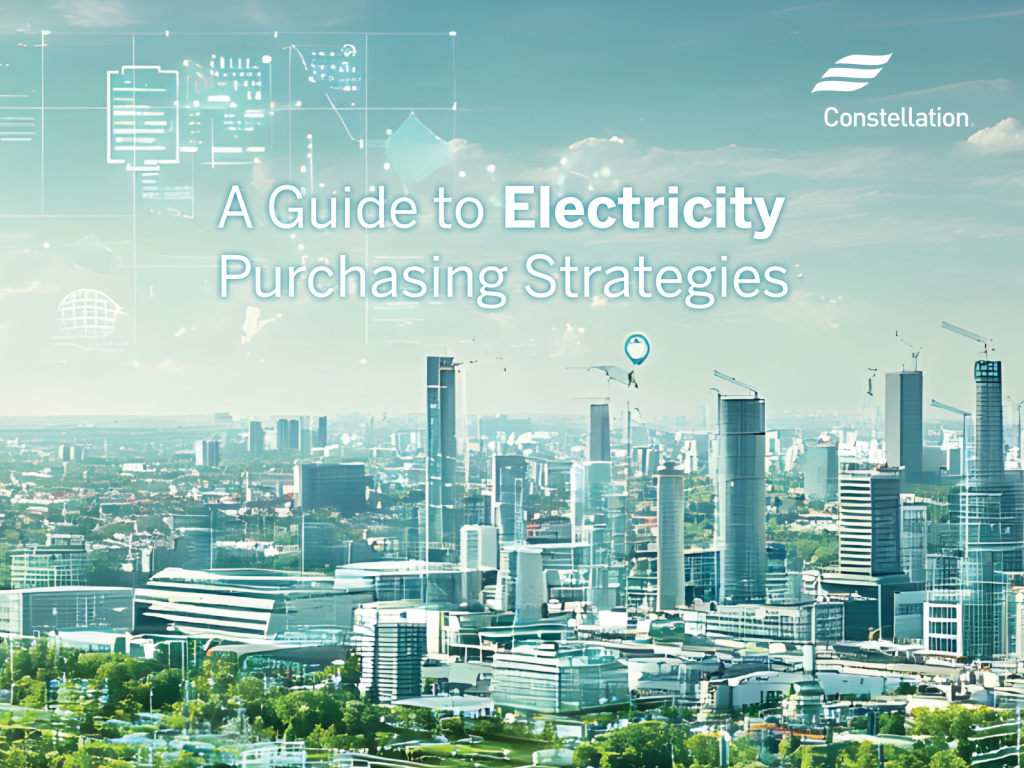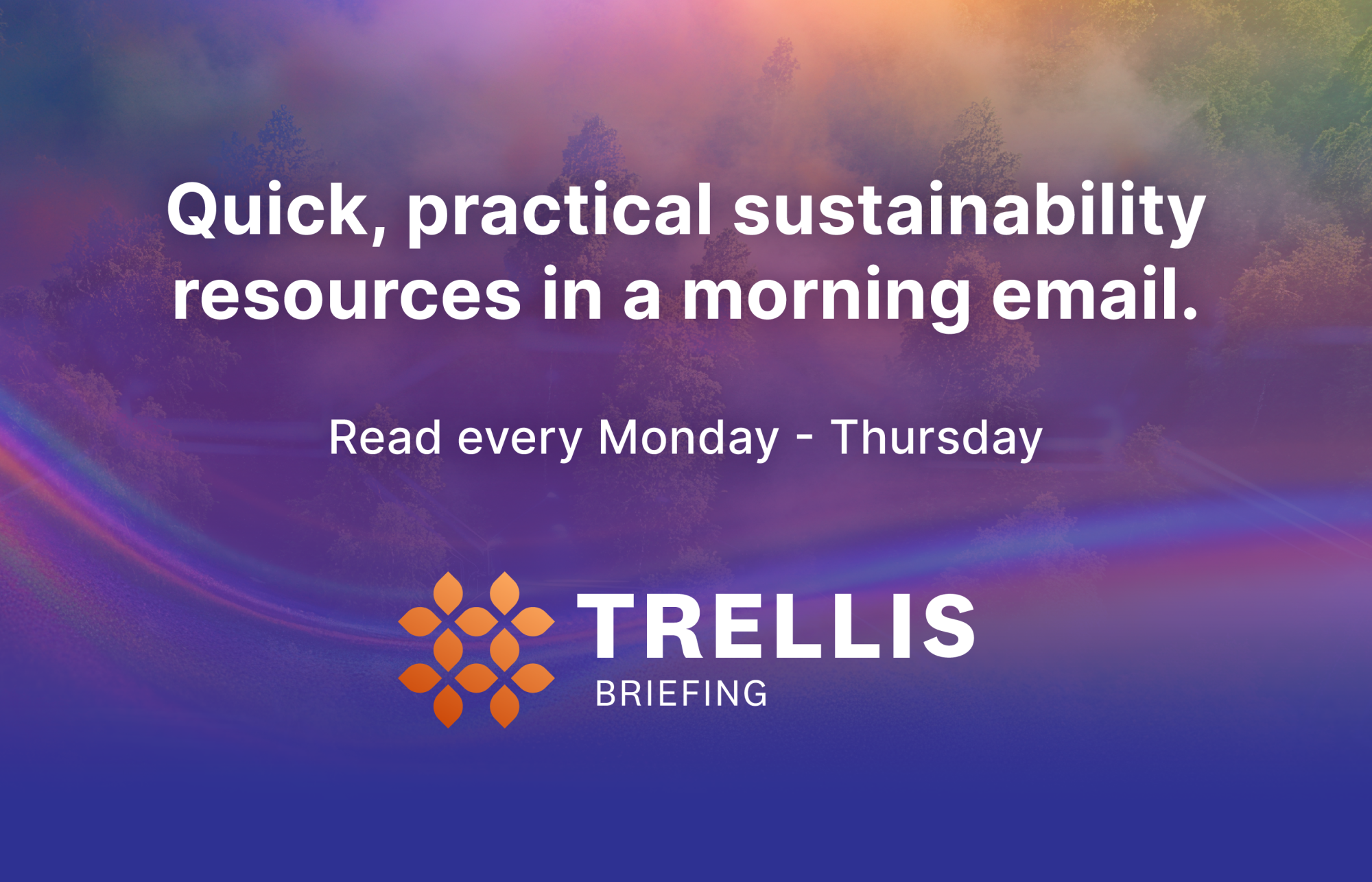Amazon’s secret weapon for countering higher emissions: fellow Climate Pledge signatories
Currently, close to 20 joint action projects are aimed at solving mutual decarbonization challenges. Read More
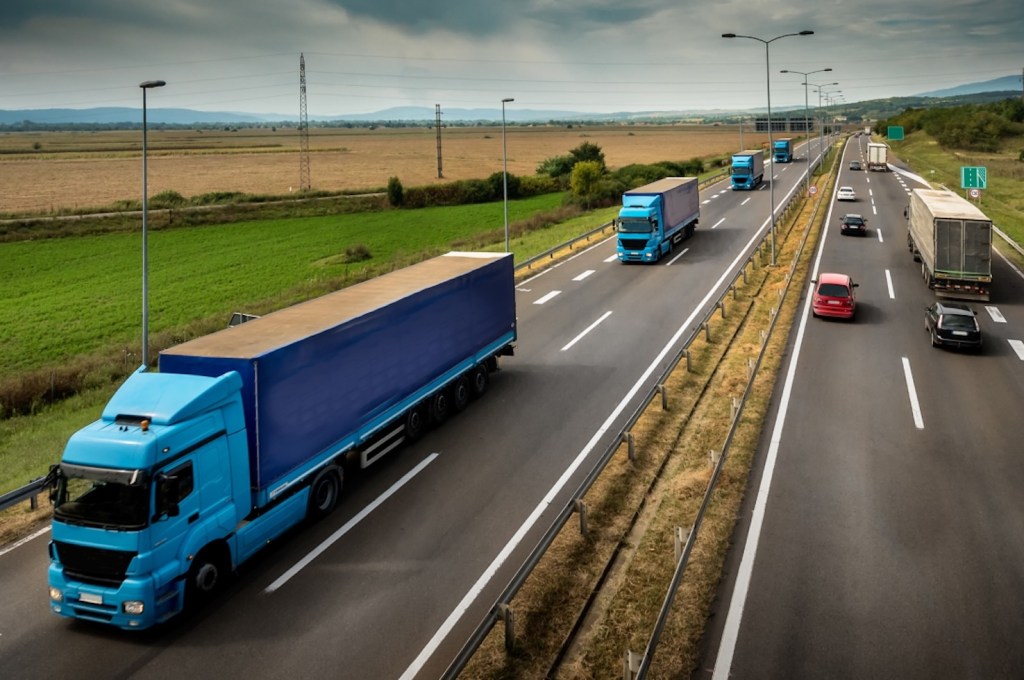
- The e-commerce and cloud computing giant’s emissions grew 34.4 percent since its 2019 baseline year.
- Amazon encourages high-emitting suppliers to set climate goals aligned with its own.
- More than 1.7 billion products are marketed on its site as Climate Pledge Friendly.
Like its closest rivals in artificial intelligence and cloud computing, Amazon’s greenhouse gas emissions rose in its latest ESG reporting update. And like Microsoft and Google, the company is committed to its existing goal, which commits it to becoming net zero by 2040 through the Climate Pledge framework it co-created in 2019.
Amazon’s sustainability chief, Kara Hurst, points to investments in climate technologies such as Rivian’s electric delivery vans, Amazon’s expansive purchases of clean energy and the joint action it is mobilizing with the 549 other signatories (as of Dec. 31, 2024) in the Climate Pledge as reasons to remain “firm” even when progress is less than linear.
“No matter what we’re faced with in the future, we’ll remain steadfast in our commitment to sustainability and continue to invest, innovate and obsess over our progress each year, with the same intensity and focus that has defined Amazon from Day One,” she said in Amazon’s 2024 sustainability report.
Watch this metric: carbon intensity
Amazon’s emissions have grown 34.4 percent since its 2019 baseline year, to 68.3 million metric tons of carbon dioxide equivalent for 2024. For comparison, in their most recent environmental update from earlier this summer, Google disclosed a cumulative emissions increase of 51 percent, to 15.2 million metric tons since its 2019 baseline, while Microsoft recorded a 24.3 percent increase since 2020, to 14.9 million metric tons.
As its emissions totals illustrate, the magnitude of Amazon’s e-commerce operations — more than 10 billion items delivered within 48 hours in 2024 — add a complexity to the Seattle company’s net-zero pledge that neither Microsoft nor Google faces. Scope 3 emissions from the company’s supply chain are about 74 percent of the total.
Amazon doesn’t break out the carbon footprint associated with data centers that power Amazon Web Services. It does, however, closely monitor another metric, carbon intensity, which measures grams of CO2 equivalent per dollar of merchandise sales. For 2024, that number was 72.6 grams, off 40.9 percent — from 122.8 grams — in 2019. During that timeframe, Amazon’s total revenue more than doubled to $638 billion.
Targeted Climate Pledge recruitment
Amazon studies carbon intensity so it can gauge the effectiveness of investments and efficiency measures across its supply chain. As 2040 draws closer, the company’s sustainability team is looking to collaborations between Amazon and other signatories to the Climate Pledge, especially big suppliers, to scale that work.
“We are heavily encouraging our suppliers, especially our top-emitting suppliers to join us in the Climate Pledge,” said Sally Fouts, Amazon’s director of the Climate Pledge. “And if they can’t commit to the pledge, we still work with these companies in other ways.”
In 2024, 76 companies joined the pledge — an average year for new signatories, said Fouts. Two were Amazon’s high-emitting suppliers, Crane Worldwide Logistics and Shorr Packaging. There was also a specific push to recruit businesses from Asia Pacific and the high-emitting fashion industry; among those to take the leap: jeans maker DL1961 and fashion designer Stella McCartney.
“Our decision to join the Climate Pledge reflects our deep commitment to bold, science-based targets,” said DL1961 CEO Sarah Ahmed. The company already closely tracks the carbon footprint of its jeans, and it uses waterless processes and recycled fabrics or those harvested from organic and regenerative sources to drive down emissions. Its goal is to cut its footprint in half by 2030.
Growing priority: collective action
Amazon is recruiting in specific supplier categories with the aim of creating working groups that can share best practices or collaborate on specific projects. Six projects were launched in 2024, involving 16 signatories, making a total of 19 initiatives up and running, Fouts said, including a few focused on one of Amazon’s biggest emissions categories, transportation and logistics.
One example is Laneshift, created to accelerate the installation of electric vehicle charging infrastructure in cities throughout Brazil, India and Mexico. Several Climate Pledge companies are supporting a 370-kilometer EV freight corridor in India between Bengaluru and Chennai. Another is Joule, which is building a charging network across Bengaluru and matching the electricity consumption with renewables.
“If we can get those companies that have a vested interest and may play a different role in that ecosystem of getting that network off the ground, then we can hopefully move faster,” said Fouts.
Amazon has deployed more than 10,000 EVs in India, on the way to realizing a larger aspiration of putting at least 100,000 electric delivery vans on the road worldwide by 2030. It had deployed 31,400 as of Dec. 31, and delivered more than 1.5 billion packages in 2024 using electric vehicles.
Brooks Running, among the first 40 companies to become a Climate Pledge signatory in 2020, benefits from these collaborations, said Dave Kemp, director of corporate responsibility for the footwear maker.
Brooks’ involvement with the Climate Pledge has enabled it to participate in contracts that reduced emissions related to aviation and maritime shipping and that enabled renewable energy investments in its supply chain. “It helped unlock partnerships and collaboration we wouldn’t have thought about or had access to,” Kemp said.
Branding blitz
Amazon is also counting on its Climate Pledge Friendly labeling program — which sellers can use to market products covered by more than 60 eco-certifications — to make a dent in its Scope 3 emissions. Amazon carried more than 2.2 million Climate Pledge Friendly products in 2024, compared with 250,000 in 2021, when the program began.
In 2024, Amazon customers purchased more than 1.7 billion products carrying the label, an increase of 48 percent from 2023. That includes 75,200 businesses that use Amazon for procurement, up from 18,000 in 2022.
Another data point Amazon touts in its 2024 report: 38.8 million customers switched to Climate Pledge Friendly brands in 2024 after buying other options in the same category in the previous two years.
Looking forward, Amazon is encouraging more sellers to qualify products under the labeling program. It’s also stepping up its support of those selling preowned or refurbished products, said Cameron Westfall, head of product and engineering for the Climate Pledge Friendly program.
“One of the things that we’re super excited about is that getting Climate Pledge Friendly is more impactful for those brands that are less discoverable on their own,” Westfall said. “So small businesses end up being some of the biggest beneficiaries of investing in sustainability.”
The Climate Pledge Friendly concept can also be applied to delivery and packaging options that surface during the checkout process. “We are starting to embed that more, and you’ll start seeing it more on the site,” Westfall said.

Subscribe to Trellis Briefing
Featured Reports

The Premier Event for Sustainable Business Leaders




